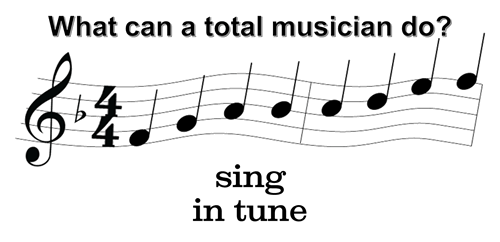|
Here you can find all the information for the classes each week!
|
Red Balloons #7
Tuesday, October 8, 2024 | Red Balloons Lessons


Lesson #7

Can you believe we're on week number 7? Boy, time sure does fly. Can you believe we are half way through the semester?! Everyone did such a great job of identifying the lines and spaces of the staff. Keep practicing lines and spaces on the staff. Ask your kiddo if the note is on a line or space. Then follow up by asking them which line or space number the note is on. Remember, mistakes are good! Mistakes are an important part of the learning cycle.

Let's Play Music
When we internalize a major scale, we are able to sing in tune. To help us internalize the major scale, we use patterns that have the strongest pull to DO. Repetition of these simple patterns will aid in developing tonal center.
Scotland's Burning
We practiced our solfege hand signs and audiation today in class. Audiation is the ability to accurately hear musical sounds in your head when they are not being sounded aloud. This is a foundational skill that allows students to internalize notes and rhythms and make sense of rhythm or notes that they see written.
Ooooo Halloween
Singing like a ghost is a great vocal channeling exercise, not just noisy nonsense! The “oo” vowel is the best vowel for placing the tone up in the head and forward in the nose. We are practicing a pure, natural head tone while extending the child’s vocal range and helping them to experiment with the sounds their voice can make. This is particularly useful for those who have trouble matching pitch. It is a great voice lesson for a 4, 5, or 6-year-old! Not bad for adults, either!
Distinguishing High and Low sounds
The staff determines pitch - the top of the staff is high sounds, the bottom is lower sounds. The placement of notes (or balloons!) determines if the sound moves up, down or stays the same.
DO is Home
When we sing "DO is Home" we can help distinguish sounds that are "too high" or "too low", or right on. This skill is intended to develop and train the ear. This will lead the students to developing relative pitch.
Puppet Show - The Magic Lamp
Identifying the melodic classical themes is one purpose of our Magical Lamp puppet show. It aids us in hearing and identify different themes in classical music, which makes the music come alive!
 Hickety Pickety w/Sol, Sol, Do on Tone Bells
Hickety Pickety w/Sol, Sol, Do on Tone Bells

Because nearly every music system in the world uses the same five notes—known as the pentatonic scale—many people say these notes are “hardwired” into our brains. Howard Goodall, Emmy-winning composer and author of The Story of Music, says these notes are so fundamental that it seems that they were pre-installed in us when we were born. He goes as far as to call these notes a “human genetic inheritance.” In this video, always-entertaining Bobby McFerrin uses the pentatonic scale to “play” an audience, and in the process provides a fascinating demonstration of how our brains are musically wired.
Also, with Halloween quickly approaching, we want to encourage you to do this fun Halloween activity with your students!
Here is a link to all the skills videos as well as the link to be able to purchase a class video to make up for a missed class. (tap or scan)
Have a musical day!
-Ms. Bethany :)








